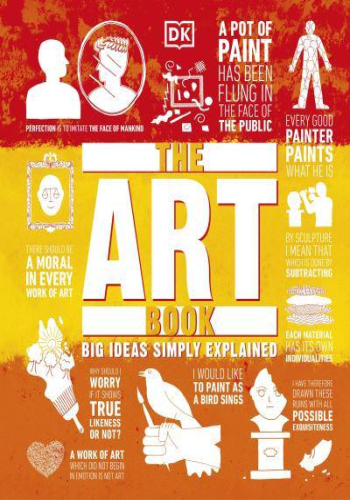Learn about key movements like impressionism, cubism and symbolism in The Art Book.
Part of the fascinating Big Ideas series, this book tackles tricky topics and themes in a simple and easy to follow format. Learn about Art in this overview guide to the subject, brilliant for novices looking to find out more and experts wishing to refresh their knowledge alike! The Art Book brings a fresh and vibrant take on the topic through eye-catching graphics and diagrams to immerse yourself in.
This captivating book will broaden your understanding of Art, with:
- More than 80 of the world's most remarkable artworks
- Packed with facts, charts, timelines and graphs to help explain core concepts
- A visual approach to big subjects with striking illustrations and graphics throughout
- Easy to follow text makes topics accessible for people at any level of understanding
The Art Book is a captivating introduction to painting, drawing, printing, sculpture, conceptual art, and performance art - from ancient history to the modern day - aimed at adults with an interest in the subject and students wanting to gain more of an overview. Here you'll discover more than 80 of the world's most groundbreaking artworks by history's most influential painters, sculptors and artists, through exciting text and bold graphics.
Your Art Questions, Simply Explained
This fresh new guide examines the ideas that inspired masterpieces by Van Gogh, Rembrandt, Klimt, Matisse, Picasso, and dozens more! If you thought it was difficult to learn about the defining movements, The Art Book presents key information in a clear layout. Find out about subject matters, techniques, and materials, and learn about the talented artists behind the great works, through superb mind maps and step-by-step summaries.
The Big Ideas Series
With millions of copies sold worldwide, The Art Book is part of the award-winning Big Ideas series from DK. The series uses striking graphics along with engaging writing, making big topics easy to understand.







